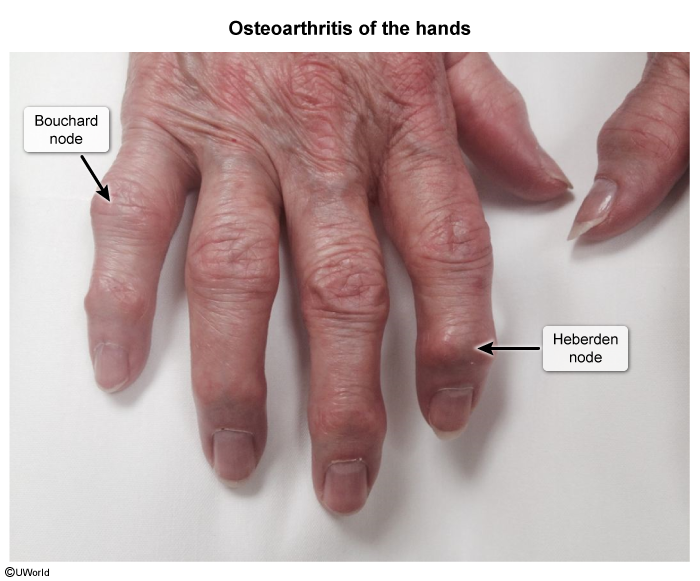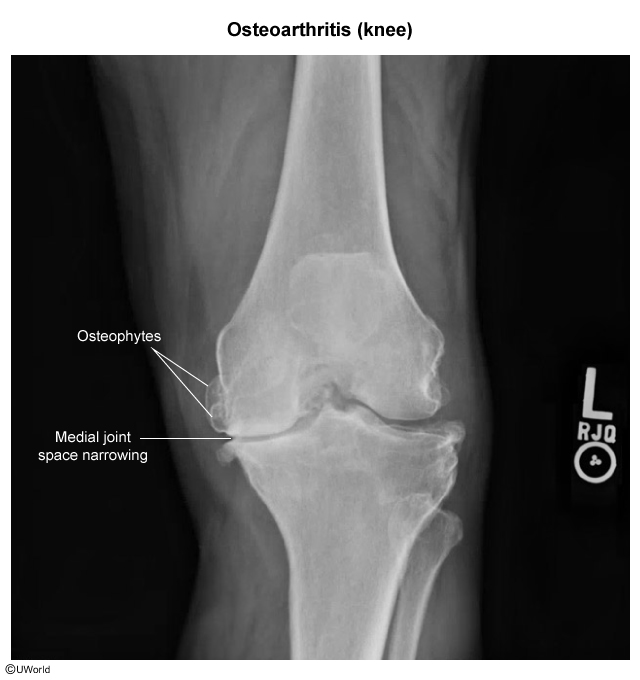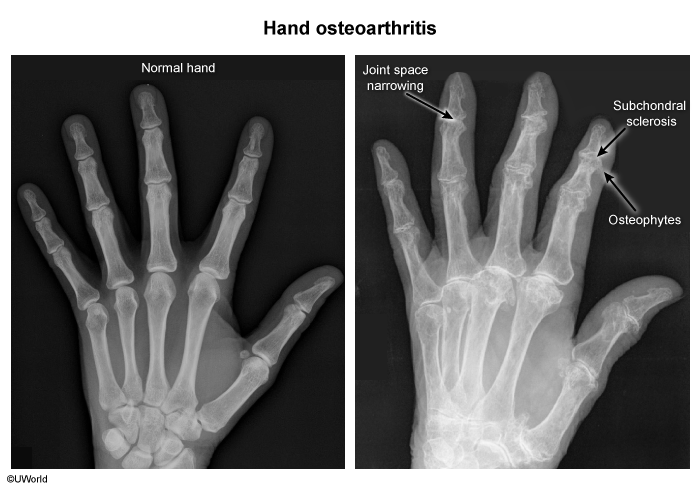Osteoarthritis
Article Sections
Introduction
Osteoarthritis (OA) is a very common musculoskeletal disorder characterized by progressive loss of articular cartilage, alterations in subchondral bone, and osteophyte formation. It is a leading cause of chronic pain and disability worldwide, predominantly affecting the knees, hips, hands, and spine.
Pathophysiology
The etiology of OA is multifactorial, with excessive biomechanical stress and relative overactivity of intraarticular metalloproteases as the major contributors to cartilage destruction. As OA progresses, the collagen and proteoglycan components of articular cartilage are degraded and replaced by increased water content. In advanced OA, apoptosis of chondrocytes can lead to fragility of the articular cartilage, resulting in fragmentation of the cartilage, exposure of subchondral bone (Figure 1), and formation of loose bodies and subchondral cysts in the underlying bone.
Although a number of proinflammatory mediators (eg, IL-6, macrophage chemotactic protein-1) have been linked to OA, overt signs of synovitis (eg, redness, warmth) are less prominent than in classic inflammatory arthritic disorders (eg, gout). Effusions, if present, are typically small.
Continue Learning with UWorld
Get the full Osteoarthritis article plus rich visuals, real-world cases, and in-depth insights from medical experts, all available through the UWorld Medical Library.
Figures
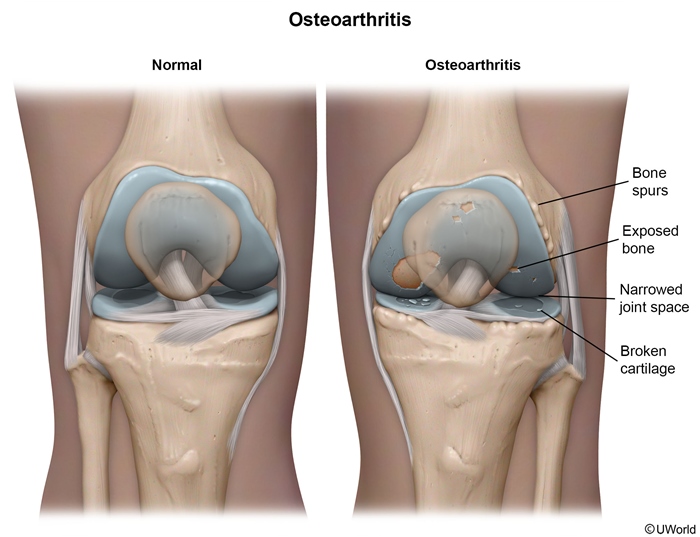
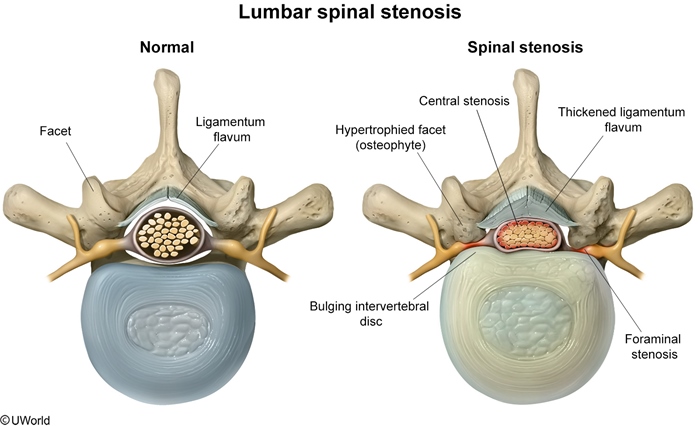
Images
